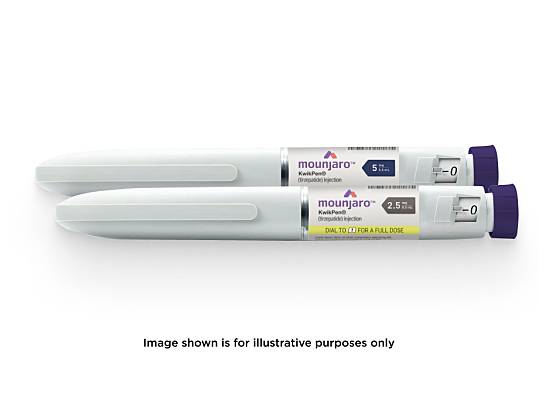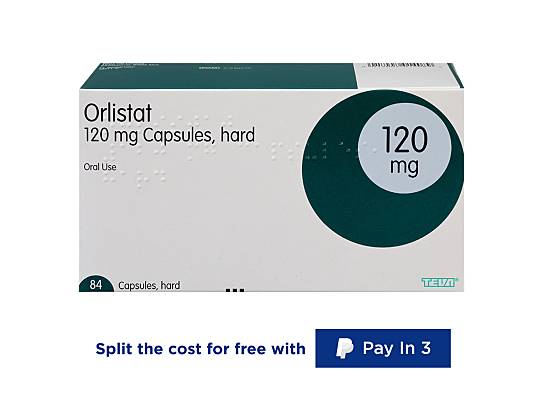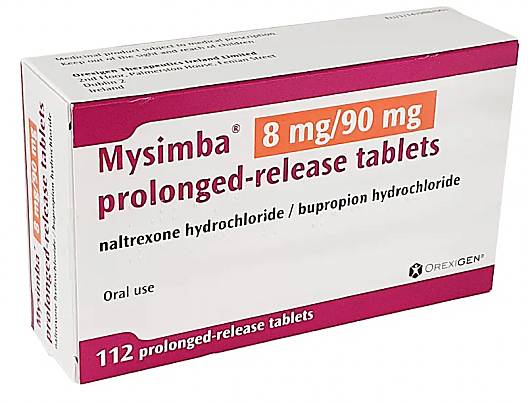Saxenda Weight Loss Injection: All you Need to Know

Medically reviewed by
Dr Babak AshrafiLast reviewed: 19 Jun 2024
Saxenda is a weight loss medication that is injected once a day to help you lose weight as part of a calorie-controlled diet. Saxenda pens contain the active ingredient liraglutide, a medication that can reduce your appetite and delay the emptying of your stomach. Currently, they are long-term out of stock, although we expect liraglutide injections to be available in the UK later this year.

No results found.
Please check your spelling or try another treatment name.
What is Saxenda?
Saxenda is a once-a-day injection you can use to help lose weight.
Saxenda is the weight loss brand name for liraglutide. Liraglutide helps you lose weight by reducing your appetite so you can eat less and lower your calorie intake. It’s also used to lower blood glucose (sugar) levels in diabetes under the brand name Victoza but at a different dose.
For effective weight loss, you should use Saxenda in combination with:
- a healthy, lower-calorie diet
- being more physically active
If you are obese or overweight you’re more likely to develop health problems such as high blood pressure (hypertension), high cholesterol, and type 2 diabetes. By losing weight, you can help prevent these in the future.
When you get a weight loss injection through our online doctor service, we will provide a weight loss support pack that includes information on diet and exercise while taking your weight loss treatment.
How does Saxenda work?
Saxenda works by reducing your appetite which helps people lose weight as it’s easier to cut down on calories when you don’t feel hungry between meals. By eating less food and therefore eating fewer calories, your weight will go down. This is even more effective if you exercise regularly. Your doctor will prescribe Saxenda alongside a diet and exercise plan which you should follow.
Saxenda is a subcutaneous injection, so the medication is injected with a short needle, just below the skin. The fatty layer in your skin is what helps you slowly absorb the liraglutide in Saxenda. Liraglutide works in a similar way to GLP-1 (glucagon-like peptide-1) which is a hormone that is naturally found in your body and controls your appetite.
When you eat, your body releases GLP-1 from your intestines and other organs. Your brain responds to GLP-1 by reducing your appetite, so you stop eating. Natural GLP-1 is quickly broken down by the body’s enzymes. But with liraglutide acting as GLP-1, it lasts longer in your body. This means you will feel more satisfied and less hungry for a longer period of time, leading to weight loss.
You should use Saxenda alongside a reduced-calorie diet and increase how much you exercise. You should not use Saxenda on its own for weight management. You can use Saxenda to help you to manage your weight if you have a high body mass index (BMI):
- of 30 or above
- between 27 and 30, with a weight-related medical problem, such as high blood pressure, diabetes, or sleep apnoea
Saxenda starts at a lower dose which will be increased gradually, over the first 5 weeks of treatment. Your doctor will tell you how to increase your dose until you reach 3 mg a day, which is the maintenance dose. As Saxenda has some side effects, it is recommended to start on a lower dose, until your body gets used to the medication. A common side effect is nausea (feeling sick) which can be lessened by taking gradual doses. Some people will not reach the maintenance dose of 3mg a day because of the side effects they experience.
When does Saxenda start to work?
Saxenda starts to work as soon as you begin using it, and you should start noticing its effects on your appetite within a few days. You will usually see weight loss results within the first few weeks to a few months of treatment. This is different for everybody and also depends on how you were eating and exercising before starting your new regime.
How long can you stay on Saxenda for?
As long as Saxenda is working for you and you're not getting negative side effects, you can continue to use Saxenda until you reach a normal BMI or the threshold set out by your doctor. You may then carry on taking Saxenda to maintain your weight if agreed by your doctor.
How effective is Saxenda?
Saxenda is considered effective in aiding weight loss. According to the EMC's data on Saxenda after 56 weeks of treatment on the maintenance dose:
- 50.7% of people lost at least 5% of their starting weight.
- 27.4% of patients lost more than 10% of their weight.
- On average, people lost around 6kg compared to 0.2kg weight loss in those taking a placebo.
People involved in the clinical trial also followed a diet and exercise regime.
How much weight can you lose on Saxenda?
When taking Saxenda, you're expected to lose at least 5% of your total weight after taking the maximum 3mg dose for 12 weeks. However, weight loss differs from person to person, and your results will also be affected by your diet and exercise habits.
How to use Saxenda
A doctor will give you a plan on how much you need to inject each day. Each week, the amount you need to inject will go up so that you can get used to Saxenda with minimal side effects. Always follow the dose plan that your doctor gives you.
Where should I inject Saxenda?
Saxenda can be injected into your:
- abdomen
- thigh
- upper arm (with the help of another person)
The abdomen is the preferred site, but you should inject it into different parts of your abdomen or other injection site areas to avoid bruising or damaging the skin. Find an area that works best for you and that you can comfortably inject.
When is the best time to take Saxenda?
You can take Saxenda at any time of the day, whenever is most convenient for you. However, you should try to make sure you take Saxenda at the same time every day as this keeps the levels of liraglutide steady in your body.
What happens when you stop taking Saxenda?
When you stop taking Saxenda, you might feel a bit sick. This is because Saxenda affects the hunger hormones in your body, and stopping it can impact your digestive system. This should only be temporary, but if you continue to feel unwell, speak to your doctor.
Saxenda isn't addictive, so you shouldn't experience any withdrawal symptoms if you stop taking it.
How long does a Saxenda pen last?
Saxenda is a pen injection that you use once a day. The pen will last for different periods, depending on your required dose.
When you start using Saxenda you will start with a small dose and build it up over a few weeks of treatment. The goal is to get to a Saxenda dose of 3mg once a day.
Because your dose will change as your treatment goes on, it is not possible to give an exact measurement of how long a single Saxenda pen will last. You can expect a single Saxenda pen to last anywhere from a few days to 2.5 weeks depending on where you are within your treatment.
How many doses are in one pen?
When you first start taking Saxenda, your pen will provide up to 17 days' worth of doses, and your first pack of 5 pens should last up to 6 weeks.
Where can you buy Saxenda?
You can’t currently buy Saxenda as it’s long-term out of stock for all prescribing services, including private doctors and the NHS. It’s not known when Saxenda will be available again, or if it will be available again. Generic liraglutide injections are set to be released sometime this year and will be available for prescription at Asda Online Doctor. The only difference is that liraglutide isn’t under a branded name, so will be made by a different manufacturer and may be cheaper than Saxenda.
If Saxenda becomes available again, or you want to get generic liraglutide injections when they’re released in the UK, you can buy them online through trusted retailers like Asda Online Doctor. All you need to do is:
- Complete a short medical questionnaire to make sure the medication is suitable for you.
- Upload 2 pictures as evidence of your current weight with your first order.
- If suitable, a doctor will prescribe treatment which will be sent to your address in discreet packaging.
How much does Saxenda cost?
This depends on where you get your treatment, although currently there isn’t any available. When Saxenda was available, the cost of treatment at Asda Online Doctor was as follows:
- 1 pen pack (£55 per pen) - £55.00
- 3 pen pack (£48 per pen) - £144.00
- 5 pen pack (£46 per pen) - £230.00
Is Saxenda available without a prescription?
Saxenda is a prescription-only medication and can not be purchased without one. If you want Saxenda, you need to speak to your GP or a doctor beforehand.
Can you get Saxenda through the NHS?
You can get Saxenda for free through the NHS if you have a BMI over 35, although it’s currently out of stock for the NHS too. When available, Saxenda is sometimes considered for people with a BMI over 30 with weight-related health issues. It can also be considered for people with a BMI of 27-30, but this depends on whether they have other medical conditions.
Side effects
The most common side effects of Saxenda are:
- feeling sick (nausea)
- being sick (vomiting)
- constipation
- diarrhoea
These side effects are likely to disappear after your body gets used to Saxenda, which normally happens within the first few weeks of treatment.
Less common side effects of Saxenda are:
- injection site reactions such as irritation, rash, or bruising of your skin
- feeling bloated
- dry mouth or a change of taste
- dyspepsia (heartburn)
- gallstones
- difficulty sleeping
- feeling dizzy
- feeling tired
Uncommon side effects of Saxenda are:
- dehydration
- a faster heart rate than usual
- feeling unwell
If you get an allergic reaction after injecting Saxenda, stop using the medication and contact 999 immediately. Symptoms of an allergic reaction include face or throat swelling, difficulty breathing, or a fast heartbeat.
If you experience strong abdominal pain after using Saxenda, this could be a sign of an inflamed pancreas (pancreatitis). Stop using Saxenda and contact your doctor immediately.
Contraindications
Saxenda can be used by adults and must be prescribed by a doctor, such as Asda Online Doctor. You should not use Saxenda if you are over 75 years old.
If you are pregnant, planning to have a baby, or are breastfeeding, do not use Saxenda.
If you have any of the following medical conditions, speak to your doctor before using Saxenda:
- heart failure
- liver problems
- renal or kidney problems (including dialysis)
- inflammatory bowel disease (IBD), such as Crohn’s disease or ulcerative colitis
- gastroparesis (delayed stomach emptying)
- pancreatitis
- inflammation of the gallbladder or gallstones
- thyroid disease, including thyroid tumours
Saxenda is generally safe to use if you are taking other medications as it has very few drug interactions. But if you take medication to treat diabetes, you may have a higher chance of hypoglycaemia (low blood sugar) when using Saxenda.
Speak to your doctor or pharmacist for further information or read the patient information leaflet.
Alternative weight loss treatments
You should take weight loss medication while you are on a reduced-calorie diet and exercising regularly. If Saxenda is not right for you, there are other types of weight loss medication you can try, such as Mounjaro, Wegovy, and orlistat.
Weight loss injections
Mounjaro comes in the form of an injectable pre-filled weight loss pen that’s taken once a week, instead of once a day like Saxenda. It contains tirzepatide, which also mimics GLP-1 to reduce appetite and leave you feeling fuller. It follows a dosage schedule, starting at 2.5mg and increasing to a maximum maintenance dose of 15mg once a week.
Wegovy, like Mounjaro, is taken once a week and comes in the form of an injectable pre-filled pen. It contains semaglutide, another GLP-1 receptor agonist that mimics GLP-1 to reduce appetite. It also follows a dosage schedule starting at 0.25mg and increasing to a maintenance dose of 2.4mg.
Weight loss tablets
Orlistat is a medication you can use to manage obesity and weight loss. It works by stopping your body from absorbing the fat from meals, leaving your body as waste. Orlistat comes in capsules and you take 1 capsule with a meal up to 3 times a day. Like Saxenda, you should not use Orlistat for more than 12 weeks (3 months) if you do not lose at least 5% of your starting body weight.
Xenical is the brand name for prescription strength orlistat (120mg). This means it contains the same active ingredient at the same dose as orlistat and works in the same way, but is sold under a brand name. It stops your body from absorbing fat from meals and can be taken up to 3 times a day.
Alli is the brand name for over-the-counter orlistat (60mg) a non-prescription weight loss medication. Alli capsules work by stopping you from absorbing fat from each meal instead of reducing your appetite.
Mysimba is different from weight loss tablets containing orlistat. It contains 2 active ingredients called naltrexone and bupropion hydrochloride. It isn’t fully known how Mysimba supports weight loss but it can reduce your appetite and increase the amount of energy your body uses, which speeds up weight loss.
What else can I do to lose weight?
You may want to consider whether the regular medication you are taking may be causing weight gain or making it difficult to lose weight. Certain medications that can cause you to put on weight include lithium tablets, sodium valproate for epilepsy, and some antidepressants. Speak to a doctor or pharmacist to review your medications if you think you might be getting weight gain as a side effect.
It’s possible that you might have an underlying condition that makes it difficult to lose weight, like hypothyroidism. You can request a thyroid function test to check if your thyroid is not working as it should.
If medication for weight loss has not worked for you, your doctor may refer you to a specialist to consider weight loss surgery known as bariatric surgery. This is where you have part of your stomach made smaller, bypassed or partially removed to restrict how much you can eat. You may want to consider weight loss surgery if your BMI is over 35.
Frequently asked questions
When will Saxenda be back in stock?
We aren’t sure when Saxenda will be back in stock, or if it will be available again in the UK. We do know that liraglutide (generic Saxenda) injections will be in stock sometime this year and will be available through our online doctor service.
Is there a generic version of Saxenda?
A generic version of Saxenda is not available yet, but it is expected to be released sometime this year.
Why am I still hungry on Saxenda?
Saxenda doesn't stop you from feeling hungry altogether. You will still feel hungry, you will just feel less hungry than you did without it, and you should get fuller quicker and for longer.
Will I gain weight if I stop taking Saxenda?
You may see some weight gain after stopping Saxenda as you’ll feel hungrier. Weight gain could be more significant if you go back to how you were eating before following a diet and exercise plan. It’s recommended to keep up with this and other lifestyle changes after coming off Saxenda.
Can you drink alcohol while taking Saxenda?
Alcohol can interact with weight loss medication so it's recommended to avoid it while using it. Drinking too much alcohol while on Saxenda can increase your risk of low blood sugar or hypoglycemia. Heavy alcohol drinking while on Saxenda can also increase the risk of pancreatitis.
Can Saxenda affect your period?
As Saxenda causes weight loss, it can also cause irregularities in your period. Fast weight loss is a common cause of irregular periods and amenorrhea (getting fewer periods). As you're losing weight with Saxenda, your periods should become more regulated alongside your weight.
You should speak to a doctor if:
- Your periods are suddenly irregular, and you're under 45
- There is at least a 20-day difference between your shortest and longest cycles
- You have periods more than every 21 days
- You have periods less than every 35 days
- Your period lasts for over 7 days

Babak studied medicine at King’s College London and graduated in 2003, having also gained a bachelor’s degree in Physiology during his time there. He completed his general practice (GP) training in East London, where he worked for a number of years as a partner at a large inner-city GP practice. He completed the Royal College of GPs membership exam in 2007.
Meet our doctorsLast reviewed: 19 Jun 2024
-
Saxenda 6 mg/mL solution for injection in pre-filled pen (SmPC) EMC [Oct 2023] [accessed May 2024]
-
Saxenda® (liraglutide injection 3mg) overview [2023] [accessed May 2024]
-
Liraglutide (BNF) [accessed May 2024]
-
Obesity treatment, NHS [Feb 2023] [accessed May 2024]
-
How Saxenda works, Saxenda.com [accessed May 2024]




(Reviews are for ZAVA UK)


GMC: 7074021

GMC: 6149061

GMC: 7085115











